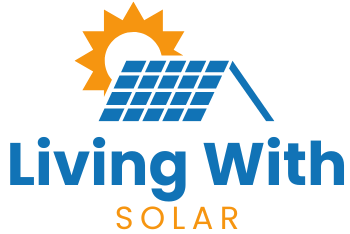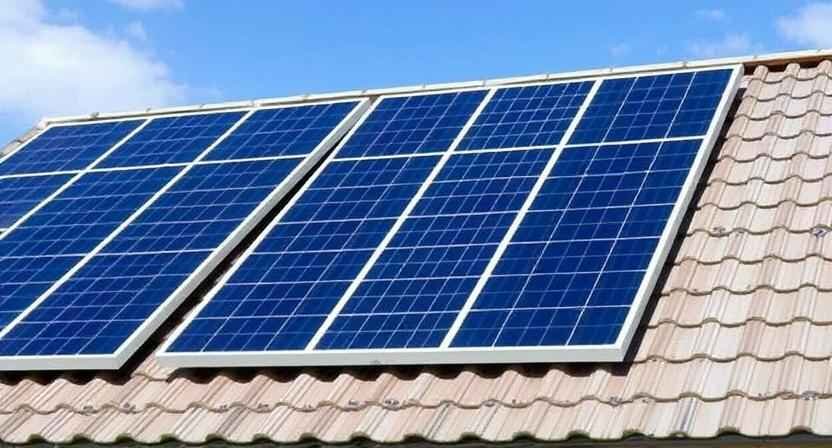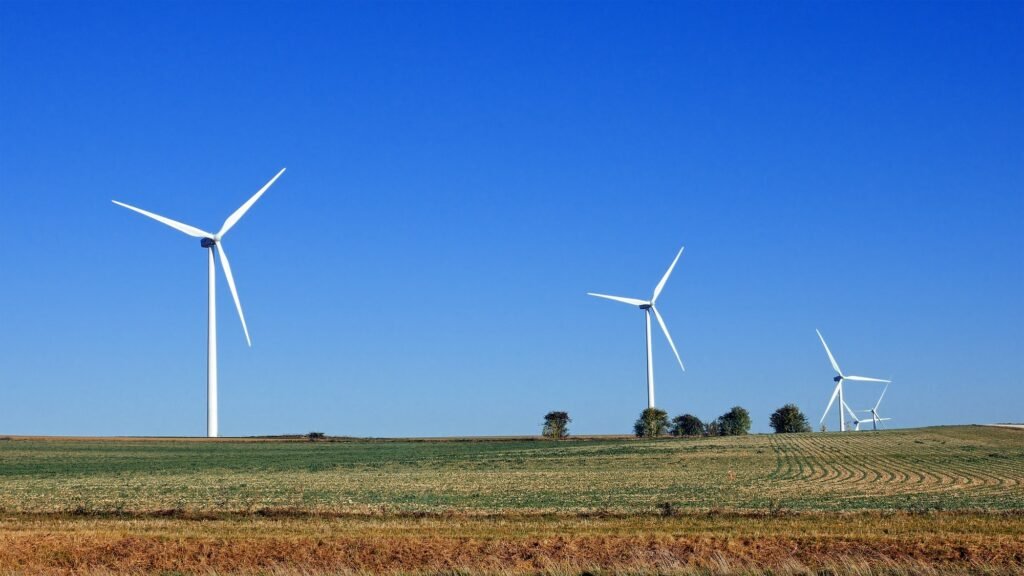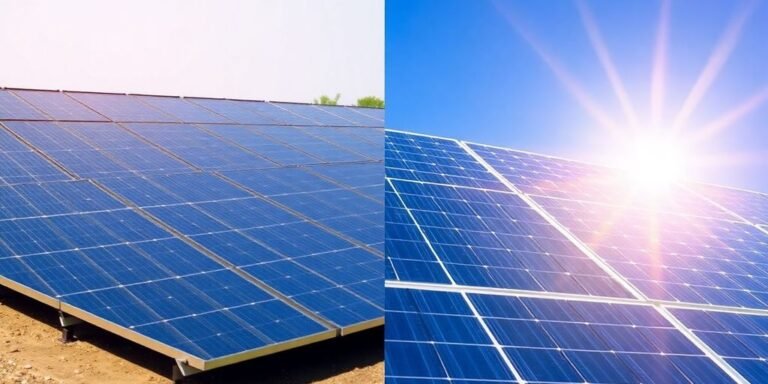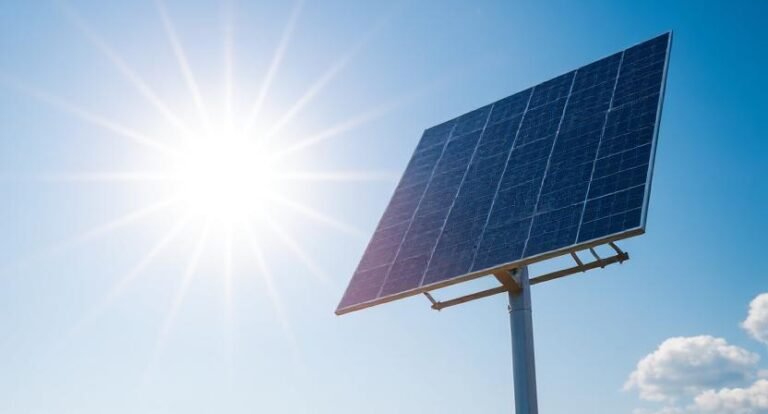When thinking about solar panel sizes, it is important to know the common types.
Most panels come in standard sizes like 60-cell (3.25 ft x 5.5 ft) and 72-cell (3.25 ft x 6.42 ft), impacting energy production.
Larger panels generally produce more wattage, which is important for meeting energy needs.
I urged you to consider space availability, efficiency loss, and weight. This will help make the installation successful. Keep exploring to uncover helpful insights on optimizing your system.
Understanding solar panel sizes and dimensions
When I began exploring solar panels, I saw that size changes can greatly affect efficiency.
The size of standard and custom panels is key. It affects how well they fit on my roof and how well they meet my energy needs.
Knowing these factors helps me choose the best solar system.
Panel Size Variations
Solar panels come in different sizes. Each size meets unique energy needs and fits various installation spaces.
The most common panel sizes are 60-cell and 72-cell models. These are usually used for homes and businesses.
A 60-cell solar panel is about 3.25 feet by 5.5 feet. The 72-cell panel is almost a foot taller, measuring 3.25 feet by 6.42 feet.
The 96-cell panel measures 41.5 inches by 62.6 inches. It has an 8 x 12 grid, which can make roof fitting tricky.
Knowing solar panel sizes is key. It helps you figure out how much roof space you need. This ensures that your system can meet your energy needs.
Dimensions impact efficiency.
Knowing how dimensions affect efficiency is key for anyone thinking about a solar panel system. The size of solar panels directly affects their energy production capabilities.
For instance, larger panels, like the 72-cell option, typically generate more wattage than smaller 60-cell panels.
This increase in output is essential for meeting energy demands effectively. Also, the size of the panels affects how easy they are to install. Bigger panels usually need more people to set up, which can change your project timeline.
When I evaluate my available roof space, the size of the panels to guarantee they fit adequately. Choosing the right solar panel size lets me generate more energy and extends my system’s life.
Standard vs. Custom Sizes
When I looked at solar panel options, I noticed that standard sizes are easier to find and install than custom ones. Here’s why I prefer standard solar panel sizes:
- Common Dimensions: Standard panels like the 60-cell (3.25 ft x 5.5 ft) are widely available and fit most solar system sizing needs.
- Simplified Installation: Their predictable size means easier mounting and fewer complications during installation.
- Cost-Effective: Standard panels often come at a lower cost due to higher production volumes.
- Space Optimization: Knowing the dimensions lets me figure out how many panels fit on my roof. This way, I can meet energy needs efficiently.
Custom sizes offer flexibility. However, they can complicate installation and often cost more.
Common Types of Solar Panels and Their Dimensions
When it comes to solar panels, I’ve found that the type you choose can really impact both performance and installation.
Monocrystalline, polycrystalline, and thin-film panels all have unique traits and sizes. These features meet various needs. Let’s explore these common types and what their sizes mean for your solar setup.
Monocrystalline Panel Features
Monocrystalline solar panels shine in renewable energy. They offer great efficiency and a stylish design. I’ve found that these panels offer several key features:
- High Efficiency: They usually reach efficiency rates of 15% to 22%. This makes them one of the best choices available.
- Standard Sizes: Monocrystalline panels usually come in two configurations: 60-cell (3.25 x 5.5 feet) and 72-cell (3.25 x 6.42 feet).
- Grid Structure: The 60-cell panels are arranged in a 6 x 10 grid, while the 72-cell panels follow a 6 x 12 layout, optimizing energy conversion.
- Aesthetic Appeal: Their sleek black look isn’t only for style. It shows off their advanced single-crystal structure, which boosts longevity.
These features make monocrystalline solar panels an excellent choice for many installations.
Polycrystalline Panel Characteristics
Polycrystalline solar panels are a practical option. They are often chosen over monocrystalline panels for many installations.
These panels typically come in standard sizes, like the 60-cell (39″x66″) and 72-cell (39″x77″).
They usually work less efficiently. However, they generate 250 to 350 watts. This makes them good for both residential and commercial solar systems.
Their manufacturing process is less energy-intensive, leading to lower costs. However, you’ll need to account for their larger footprint when sizing your solar system.
TypeDimensions60-cell39 inches x 66 inches72-cell39 inches x 77 inchesPower Output250-350 wattsEfficiencyLower than monocrystalline
Thin-Film Panel Overview
Thin-film solar panels offer a new way to capture solar energy. They are lightweight and flexible, making them unique.
While they typically offer lower efficiency rates of about 10% to 12%, they excel in certain conditions. Here are some key aspects of thin-film panels I’ve found useful:
- Types: Common varieties include cadmium telluride (CdTe) and amorphous silicon (a-Si).
- Size: Standard dimensions often measure around 3.5 feet by 5.5 feet.
- Performance: They can perform better in low-light and high-temperature environments.
- Installation: You often need more surface area for the same energy output as crystalline panels.
Knowing these traits helps you see how thin-film panels can work in your solar energy plan.
Factors Influencing Solar Panel Output
Several key factors affect solar panel output and can greatly influence energy production.
Solar panels’ design, size, and PV technology affect how much energy they can produce.
Available roof space is key. It decides how many panels can fit and impacts total energy production.
Also, solar irradiance changes by location. This affects the hours of sunlight for generating electricity.
Local climate conditions, like temperature and humidity, can also affect panel efficiency.
I always look at monthly and yearly energy needs. This helps me figure out how much solar power we need and how many panels to use. Understanding these factors helps to optimize my solar system for maximum energy output.
Step-by-Step Guide to Sizing Your Solar System
Knowing what affects solar panel output helps you size your solar system correctly. Here’s a straightforward guide to help you:
- Look at your utility bills. This will show your average monthly energy use in kilowatt-hours (kWh).
- Calculate your daily energy usage by dividing your monthly kWh by 30 to know how much power you need daily.
- Check the average peak sunlight hours where you live. This will help you know the size of the solar array you need.
- Adjust your needed kW output for panel efficiency losses, which are usually 15-20%. Then, divide by the wattage of your chosen solar panels to get the total number needed.
Calculating Your Daily Energy Consumption
Calculating your daily energy use is key to finding the best solar panel system for you.
To start, gather your electric bills from the past year and total the kilowatt-hours (kWh) used.
Divide that total by 12 for your average monthly usage, and then by 30 for your daily kWh consumption. It’s helpful to add a 25% cushion for efficiency losses. Here’s a simple table to visualize this:
CalculationValueDescriptionTotal Annual Usage (kWh)10,800 (example)Total kWh from billsAverage Monthly Usage (kWh)900Total / 12Daily kWh Usage30Monthly / 30
This method ensures you can accurately measure your energy use for the right solar system.
Estimating Peak Sun Hours for Your Location
To size your solar panel system well, you need to know the peak sun hours for your area. This knowledge is key. It affects how much energy your panels can produce. Here’s how to estimate those peak sunlight hours:
- Research local climate data to find average peak sun hours for your area.
- Use resources like the National Renewable Energy Laboratory’s GHI maps to get accurate estimates.
- Calculate your daily kWh usage, dividing it by the peak sun hours available.
- Adjust your calculations based on seasonal variations in sunlight.
Accounting for System Losses and Efficiency
Sizing a solar panel system may seem simple if you only consider energy needs. It’s important to consider system losses and efficiency for the best performance.
Solar panels usually lose about 0.8% of their performance each year. This adds up to a total loss of around 20% over 25 years.
To ensure your system meets energy needs, use a 15-20% efficiency loss factor. This will help you calculate the right array size. Additionally, factors like shading and temperature fluctuations can further impact output.
Calculate your total watt-hours and add 25% for losses. This will help your system run well and last longer. It boosts performance, too.
Determining the number of solar panels needed.
Figuring out how many solar panels you need can be tough. But it’s important to ensure you meet your energy needs. Here’s how to get started:
- To find your average daily energy use, check your utility bills. The typical U.S. home uses around 30 kWh each day.
- Check peak sunlight hours: Find out how many hours of sunlight your area gets each day.
- Determine your system size: Divide your daily energy use by peak sunlight hours. For example, 30 kWh divided by 5 hours equals 6 kW.
- To find the total number of panels you need, first convert kW to watts. Then, divide that number by the wattage of your solar panels. For example, 6,000 watts divided by 300 watts equals 20 panels.
This method ensures your solar panel system size fits your energy needs.
How much do solar panels weigh??
When figuring out how many solar panels you need, it’s also important to take into account their weight. The weight of solar panels can affect your roof’s structural integrity, so here’s a quick breakdown:
Panel TypeWeight RangeNotes60-cell33 – 40 poundsStandard residential size72-cell40 – 50 poundsHeavier due to extra cells96-cell50 – 65 poundsLarger panels, more weight
Understanding the weight helps guarantee proper handling and installation, preventing safety risks. I always suggest talking to experts first. They can check your roof’s strength before you install anything.
Frequently Asked Questions
How to Calculate Solar Panel System Size?
To size my solar panel system, I first find my daily energy use. Then, I divide that by the peak sunlight hours. I also account for efficiency losses to guarantee I have enough power for my needs.
What is system sizing in solar energy?
When I think about system sizing in solar energy, I realize it’s not just about numbers. It’s about understanding energy needs, peak sunlight, and efficiency. Getting it right guarantees our systems can truly meet demands.
What are the dimensions of a 10 kW solar system?
I understand you’re curious about the dimensions of a 10 kW solar system. It usually needs about 600 to 750 square feet of space. This depends on the panels and how they are arranged on your roof.
What is the 20% rule for solar panels?
The 20% rule for solar panels is something I always consider. Add 20% to my system size. This helps cover inefficiencies and ensures I meet energy demands. It’s especially important during peak usage or cloudy days.
